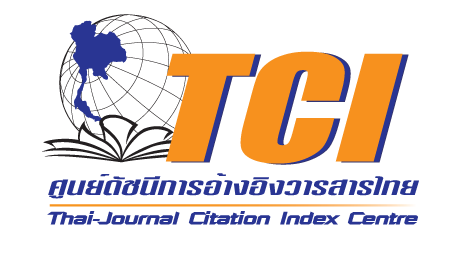The Role of the Intermediate Variable with Innovation as a Transfer of Entrepreneurial Competency to the Success of Small and Medium Sized Enterprise Business Operations of the Coffee Production Business, in the Group of Northern Provinces
DOI:
https://doi.org/10.14456/psruhss.2024.60Keywords:
Entrepreneurial competency, Business success, Small and medium enterprises, InnovationAbstract
The objectives of this research 1) To study the competency of entrepreneurs, innovation and success of small and medium sized enterprises in the coffee production business in the northern provinces. 2) To test the consistency of the causal relationship model of entrepreneurial performance with innovation as a means of transferring the competency of entrepreneurs to the success of operating small and medium sized enterprises in the coffee production business in the group of northern provinces. 3) To study the direct and indirect influences on the success of small and medium sized enterprise business operations in the coffee production business in the northern provinces. The data were collected by using a questionnaire distributed to 670 small and medium enterprises in the coffee production business. The data were analyzed by descriptive statistics including percentage, mean and standard deviation to explain the characteristics of the variables. Inferential statistics were used to evaluate the model through SEM structural equation model analysis using AMOS and PROCESS 4.2 programs. The results showed that 1) The direct relationship that affected the success of business operations the most was the strategic competency of the entrepreneurs, with an influence size of 0.581, leadership with an influence size of 0.490 in technology (the influence size was equal to 0.393), and the commitment aspect with the influence size equal to 0.314, with a prediction coefficient equal to 64.20 percent, respectively. 2) Besides, in terms of the index measuring the level of harmony between the structural equation model and the empirical data, 5 out of 9 indicators passed the criteria (with 4 indicators accepted as being consistent), showing that structural equation model testing entrepreneurs' strategic competency, commitment, leadership and technology, with innovation being the conveyor to the success of business operations, was consistent with empirical data. 3) Also, the test of the direct and indirect influences on the success of business operations indicated that the strategic competency of entrepreneurs had the most positive direct and indirect effects on the success of business operations, and leadership, respectively.
References
กนกกาญจน์ คำบุญชู และธนัสถา โรจนตระกูล. (2565). คุณลักษณะของผู้ประกอบการและกลยุทธ์ที่มีผลต่อความสำเร็จในการดำเนินธุรกิจวิสาหกิจขนาดกลางและขนาดย่อม (SMEs) มหาวิทยาลัยราชภัฏพิบูลสงคราม. Journal of Roi Kaensarn Academi, 7(12), 397-411.
กรมพัฒนาธุรกิจการค้า. (2565). คู่มือมาตรฐานเกณฑ์ธรรมาภิบาลธุรกิจ. สืบค้น 20 สิงหาคม 2565, จาก https://www.dbd.go.th/download/article/article_20190402152234.pdf
สำนักงานส่งเสริมวิสาหกิจขนาดกลางและขนาดย่อม. (2565 ก). ภาพรวม SME แยกรายจังหวัดหรืออุตสาหกรรม. สืบค้น 20 สิงหาคม 2565, จาก https://www.sme.go.th/upload/mod_download/download-20230202090136.pdf
สำนักงานส่งเสริมวิสาหกิจขนาดกลางและขนาดย่อม. (2565 ข). รายงานสถานการณ์ MSME ไตรมาสที่ 4. สืบค้น 4 กุมภาพันธ์ 2566, จาก https://www.sme.go.th/upload/mod_download/download-20230202090136.pdf
Adhiputra, M. W. (2017). Pengaruh kepuasan kerja dan komitmen organisasional terhadap kualitas layanan hotel. Business Management Journal, 11(2), 120-139.
Berger-Walliser, G., Bird, R. C., & Haapio, H. (2011). Promoting business success through contract visualization. JL Bus. & Ethics, 17, 55-75.
Chittithaworn, C., Islam, M. A., Keawchana, T., & Yusuf, D. H. M. (2011). Factors Affecting Business Success of Small & Medium Enterprises (SMEs) in Thailand. Asian Social Science, 7, 180-190.
DeLone, W. H., & McLean, E. R. (2003). The DeLone and McLean model of information systems success: a ten-year update. Journal of management information systems, 19(4), 9-30.
Hair, J., Hult, T., Ringle, C., & Sarstedt, M. (2014). A Primer on Partial Least Squares Structural Equation Modeling (PLS-SEM). Thousand Oaks, CA: Sage Publications.
Hair, J.F., Black, W.C., Babin, B.J. & Anderson, R.E. (2010). Multivariate Data Analysis (7th Ed.). Pearson, New York.
Haseeb, M., Lis, M., Haouas, I., & WW Mihardjo, L. (2019). The mediating role of business strategies between management control systems package and firms stability: Evidence from SMEs in Malaysia. Sustainability, 11(17), 4705.
Khairuddin, S. M. H. S., Saidun, Z., & Hashim, M. S. (2019). Measuring the effects of work motivation on stress and performance linkages in SME. Asian Academy of Management Journal, 24(2), 1-15.
Lim, C. H., & Teoh, K. B. (2021). Factors influencing the SME business success in Malaysia. Annals of Human Resource Management Research, 1(1), 41-54.
Malerba, F., & Marengo, L. (1995). Competence, innovative activities and economic performance in Italian high–technology firms. International Journal of Technology Management, 10(4), 461-477.
Mkheimer, I. (2018). The impact of leadership styles on business success: A Case Study on SMEs in Amman. Arabian Journal of Business Management Review, 8(2), 2-9.
Murat Ar, I., & Baki, B. (2011). Antecedents and performance impacts of product versus process innovation: Empirical evidence from SMEs located in Turkish science and technology parks. European journal of innovation management, 14(2), 172-206.
Pletnev, D., & Barkhatov, V. (2016). Business Success of Small and Medium Sized Enterprises in Russia and Social Responsibility of Managers. Procedia - Social and Behavioral Sciences, 221, 185–193. https://doi.org/10.1016/j.sbspro.2016.05.105
Poturak, M., Mekic, E., Hadziahmetovic, N., & Budur, T. (2020). Effectiveness of Transformational Leadership among Different Cultures. International Journal of Social Sciences & Educational Studies, 7(3), 119-129.
Schermelleh-Engel, K., Moosbrugger, H., & Müller, H. (2003). Evaluating the fit of structural equation models: Tests of significance and descriptive goodness-of-fit measures. Methods of psychological research online, 8(2), 23-74.
Umar, A., Omar, C. M. Z. C., Hamzah, M. S. G., & Hashim, A. (2018). The mediating effect of innovation on entrepreneurial competencies and business success in Malaysian SMEs. International Business Research, 11(8), 142-153.
Wen, T. B., Ho, T. C., Kelana, B. W. Y., Othman, R., & Syed, O. R. (2019). Leadership styles in influencing employees’ job performances. International Journal of Academic Research in Business and Social Sciences, 9(9), 55-65.

Downloads
Published
How to Cite
Issue
Section
License
Copyright (c) 2024 Humanities and Social Sciences Journal of Pibulsongkram Rajabhat University

This work is licensed under a Creative Commons Attribution-NonCommercial-NoDerivatives 4.0 International License.
Any articles or comments appearing in the Journal of Humanities and Social Sciences, Rajabhat Phibulsongkram University, are the intellectual property of the authors, and do not necessarily reflect the views of the editorial board. Published articles are copyrighted by the Journal of Humanities and Social Sciences, Rajabhat Phibulsongkram University.







